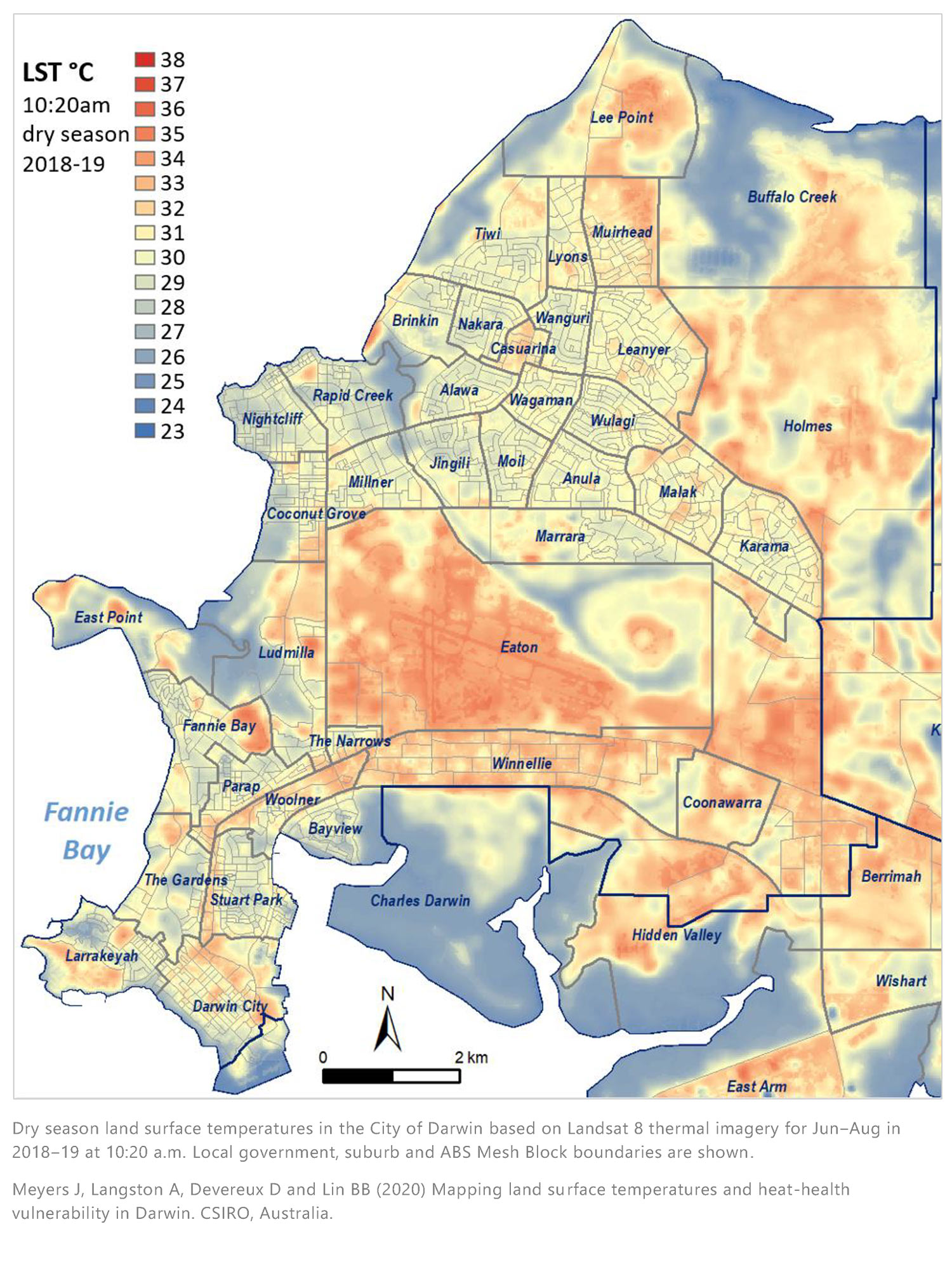Where is it hot
in the city?
What is the urban heat island effect?
The Urban Heat Island (UHI) has been observed in cities around the world where the urban area has higher temperature than surrounding rural and suburban areas1
- Urban development replaces natural land surfaces and vegetation with building materials and hard paved surfaces that absorb solar radiation and heat during the day
- Waste heat from air conditioners used to cool buildings or heat generated from the engines of vehicles can also be trapped and absorbed in cities
- Accumulated heat from the city is slowly released at night which keeps temperatures higher than surrounding natural areas
- Fewer trees and plants in the urban landscape to provide shade and the cooling benefits of evapotranspiration that lower the local temperature
- Hard surfaces in cities means that there are less opportunities for rainfall to be retained in the landscape and infiltrate the soil which reduces the potential for evaporation which can contribute to cooling
Urban heat island effect in Darwin
Urban overheating can have serious consequences on thermal comfort, energy consumption, health and the economy2. Research from the University of New South Wales found that the CBD is between 2–3 °C warmer than the surrounding suburbs3. CSIRO has CSIRO mapped land surface temperatures across Darwin during the dry season, which found that land uses associated with thermal hot spots included4:
- Areas with large numbers of buildings, roofs, paved surfaces and little vegetation cover
- New housing developments where trees and gardens are still establishing
- Areas with large patches of bare ground and dry grass (which are likely to be cooler during the wet season)

References
- Yuan F and Bauer ME (2007) Comparison of impervious surface area and normalized difference vegetation index as indicators of surface urban heat island effects in Landsat imagery. Remote Sensing of environment 106(3), 375-386.
- Corburn J (2009) Cities, climate change and urban heat island mitigation: localising global environmental science.
Urban Studies 46(2), 413-427. - Santamouris M, Haddad S, Ulpiani G, Fox J, Paolini R, Synnefa A, Fiorito F and Garshasbi S (2017b) Heat Mitigation Program Darwin, NT. UNSW, UNSW Faculty of Built Environment.
- Meyers J, Langston A, Devereux D and Lin BB (2020) Mapping land surface temperatures and heat-health vulnerability in Darwin.
CSIRO, Australia.
ACKNOWLEDGEMENT
Your Tropical City acknowledge the Larrakia people as the Traditional Owners of the Darwin region and pay our respects to Larrakia elders past and present. We are committed to a positive future for the Aboriginal community.
564 Vanderlin Drive,
Berrimah NT 0828
(08) 8944 8436
hello@yourtropicalcity.com.au
PARTNER
ACKNOWLEDGEMENT
Your Tropical City acknowledge the Larrakia people as the Traditional Owners of the Darwin region and pay our respects to Larrakia elders past and present. We are committed to a positive future for the Aboriginal community.
CONTACT
564 Vanderlin Drive,
Berrimah NT 0828
(08) 8944 8436
hello@yourtropicalcity.com.au
PARTNER